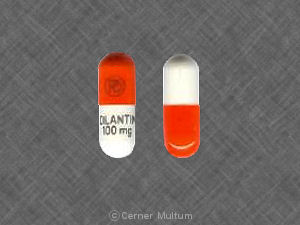Dilantin Interactions
There are 866 drugs known to interact with Dilantin (phenytoin), along with 12 disease interactions, and 1 alcohol/food interaction. Of the total drug interactions, 246 are major, 571 are moderate, and 49 are minor.
- View all 866 medications that may interact with Dilantin
- View Dilantin alcohol/food interactions (1)
- View Dilantin disease interactions (12)
Most frequently checked interactions
View interaction reports for Dilantin (phenytoin) and the medicines listed below.
- albuterol
- amlodipine
- aspirin
- Ativan (lorazepam)
- atorvastatin
- clonazepam
- folic acid
- furosemide
- gabapentin
- ibuprofen
- Keppra (levetiracetam)
- Lasix (furosemide)
- levothyroxine
- Lipitor (atorvastatin)
- lisinopril
- Lyrica (pregabalin)
- metformin
- metoprolol
- Neurontin (gabapentin)
- omeprazole
- pantoprazole
- phenobarbital
- Plavix (clopidogrel)
- prednisone
- Synthroid (levothyroxine)
- trazodone
- Tylenol (acetaminophen)
- Vitamin B12 (cyanocobalamin)
- Vitamin D3 (cholecalciferol)
- Xanax (alprazolam)
Dilantin alcohol/food interactions
There is 1 alcohol/food interaction with Dilantin (phenytoin).
Dilantin disease interactions
There are 12 disease interactions with Dilantin (phenytoin) which include:
- blood dyscrasias
- liver disease
- porphyria
- renal dysfunction
- cardiotoxicity
- suicidal tendency
- arrhythmias
- hyperglycemia
- megaloblastic anemia
- osteomalacia
- alcoholism
- thyroid function tests
More about Dilantin (phenytoin)
- Dilantin consumer information
- Compare alternatives
- Pricing & coupons
- Reviews (78)
- Drug images
- Side effects
- Dosage information
- During pregnancy
- Generic availability
- Drug class: hydantoin anticonvulsants
- Breastfeeding
Related treatment guides
Drug Interaction Classification
| Highly clinically significant. Avoid combinations; the risk of the interaction outweighs the benefit. | |
| Moderately clinically significant. Usually avoid combinations; use it only under special circumstances. | |
| Minimally clinically significant. Minimize risk; assess risk and consider an alternative drug, take steps to circumvent the interaction risk and/or institute a monitoring plan. | |
| No interaction information available. |
See also:
Further information
Always consult your healthcare provider to ensure the information displayed on this page applies to your personal circumstances.


